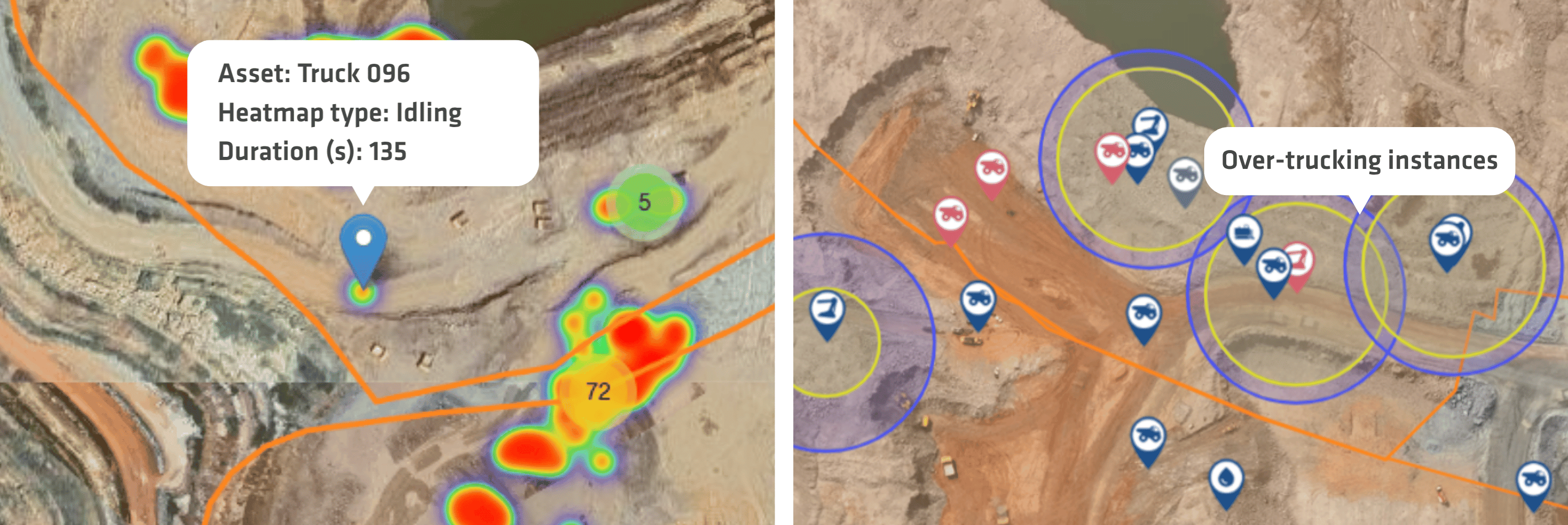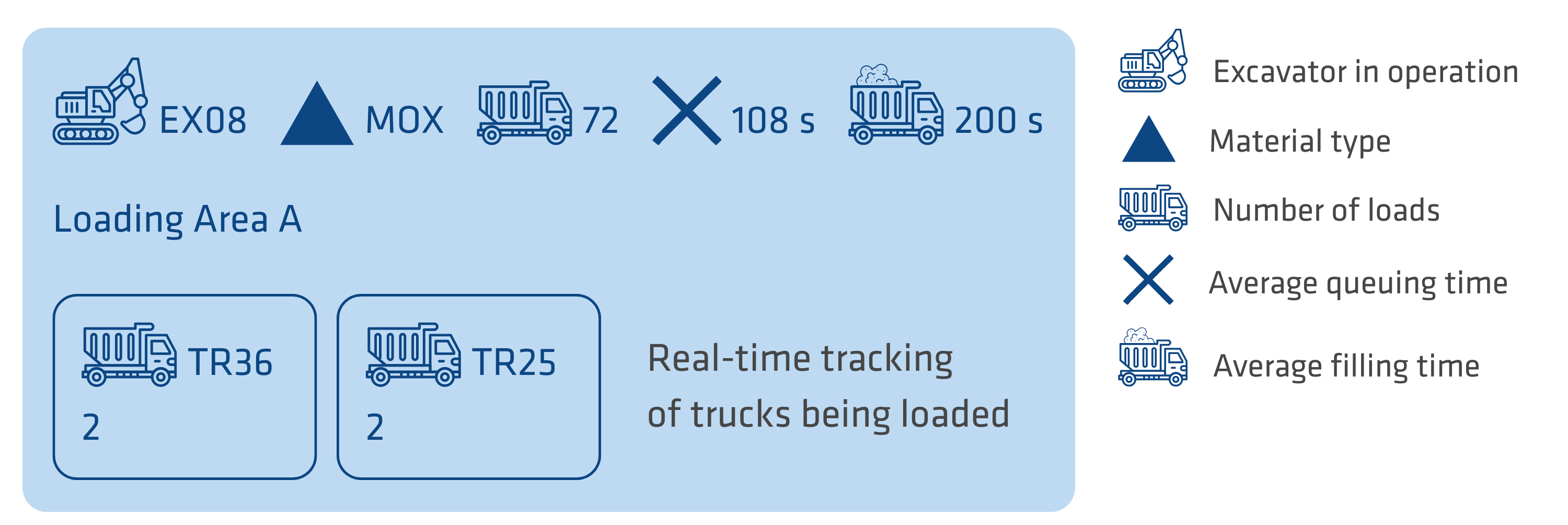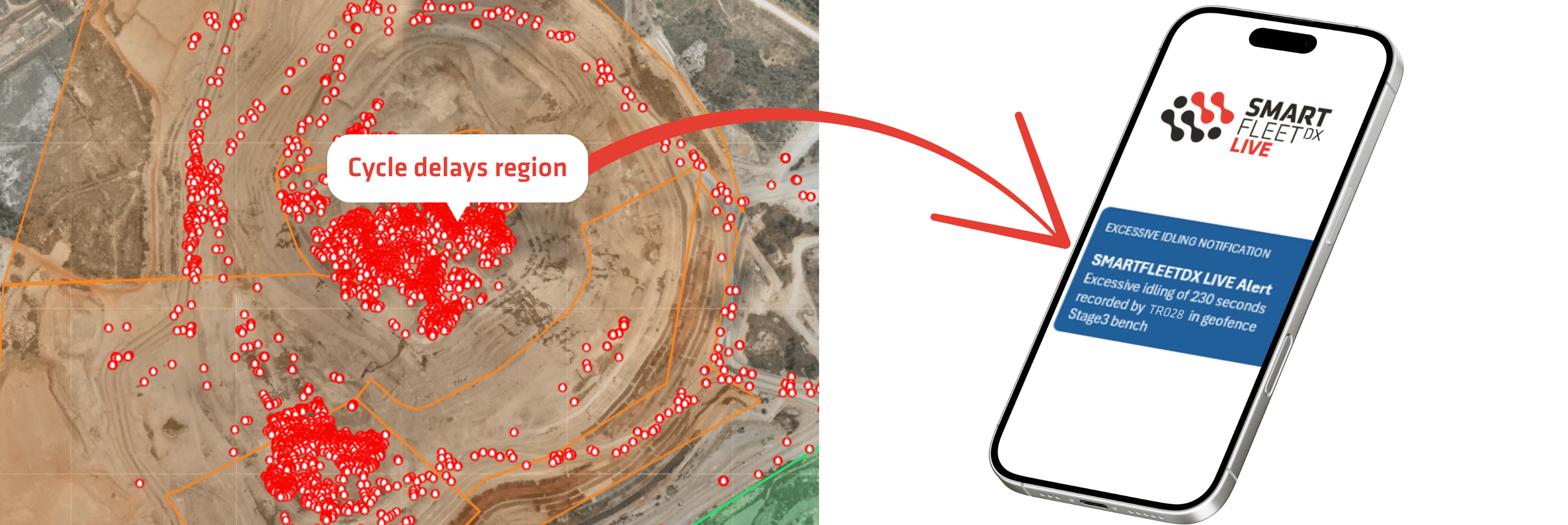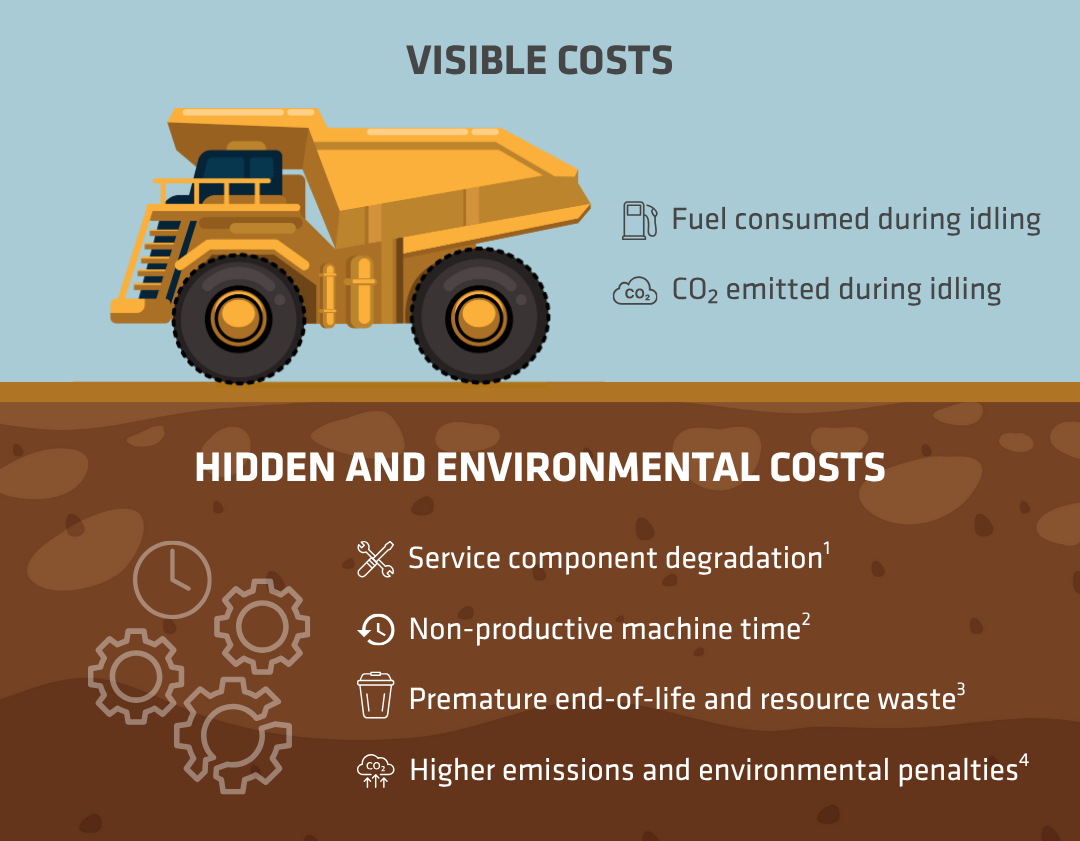
1. DATA INSIGHTS UNCOVER DELAY CHALLENGES
Our client, a large-scale mining operation, sought to enhance productivity while meeting its environmental objectives.
Despite operating a fleet of 41 trucks and completing 28,504 cycles to move over 2.5 million tonnes of material, the operation faced inefficiencies caused by queuing and cycle delays.
Analysis with SmartFleetDX LIVE revealed that queuing and idle periods were responsible for excessive fuel consumption and CO₂ emissions (177,155 kg), which had a direct impact on cost and sustainability performance.
These inefficiencies limited fleet productivity, increased fuel waste and raised the mine’s carbon footprint.


2. TARGETED ACTIONS TO REDUCE QUEUING AND DELAYS
These challenges were addressed by leveraging the analytics tools of SmartFleetDX LIVE, with a focus on real-time management of idle trucks and dynamic fleet coordination.
The following were identified using SmartFleetDX LIVE:
• Excessive idling zones were pinpointed using intuitive heat maps to identify areas where trucks remained stationary during loading or unloading.
• Over-trucking near excavators was detected using instant idling notifications, enabling immediate corrective action.

• Trucks were dynamically reassigned to redistribute the fleet load and reduce queuing times at loading points through supervised dispatching.

• Cycle delays were isolated by segmenting the haul cycle and identifying stages with recurring slowdowns.
• Queue averages were monitored in real time from the start of each shift, enabling immediate on-site adjustments to prevent bottlenecks.

These actions reduced idle time directly, improved road flow and lowered fuel consumption without requiring additional assets.
3. MEASURABLE RESULTS WITH SMARTFLEETDX LIVE
Measurable performance and environmental gains were achieved after implementing these optimisation measures:

By transforming queuing and cycle delay management into a data-driven process, the client achieved higher output with a smaller environmental footprint.
4. END RESULT: SUSTAINABILITY THROUGH EFFICIENCY
This case study demonstrates how SmartFleetDX LIVE transforms queuing and delay management into a powerful lever for both productivity and environmental performance.
By combining real-time data, heat maps, and dynamic dispatching, the client achieved measurable reductions in idle fuel use and CO₂ emissions while unlocking new productivity potential.

SmartFleetDX LIVE empowers mines to turn delay management into sustainable efficiency, proving that greener operations begin with smarter flow.
5. OUR EXPERT ADVICE: HIDDEN ENVIRONMENTAL AND OPERATIONAL COSTS OF IDLE TIME
Beyond fuel and emissions, prolonged idling carries hidden sustainability and lifecycle costs.
Reducing idle time not only cuts fuel and emissions, but also extends the truck life, lowers maintenance demand, and reduces waste throughout the equipment's lifecycle

1 The cost of oil and filter changes for heavy-duty mining trucks ranges from $300 to $600 per service, depending on the type of oil used and the labour involved. [Epika Fleet Services, 2025]
Frequent idling reduces the lifespan of the oil, meaning that servicing is required more frequently, which could potentially increase annual maintenance costs by 15–25%.
2 Excessive idling accelerates engine hour accumulation, with up to 40% of total engine-on hours in mining fleets accounted for by idle time. [EquipmentShare, 2023].
3 This results in equipment being retired early, with some mining trucks reaching the end of their lives 2–3 years earlier than expected.
4 Disposing of used oil and filters adds to environmental waste, with each oil change generating up to 40 litres of waste oil and multiple filters.
Replacing a single mining truck can generate tens of thousands of kilograms of CO₂ emissions from manufacturing and disposal processes. [Sahoo, A. K. et al., 2025]
For example:
• Manufacturing a new haul truck can emit over 100,000 kg of CO₂, depending on the materials and energy sources used.
• Scrapping and recycling old equipment generates further emissions and material waste, particularly when this is done frequently due to wear caused by idling.